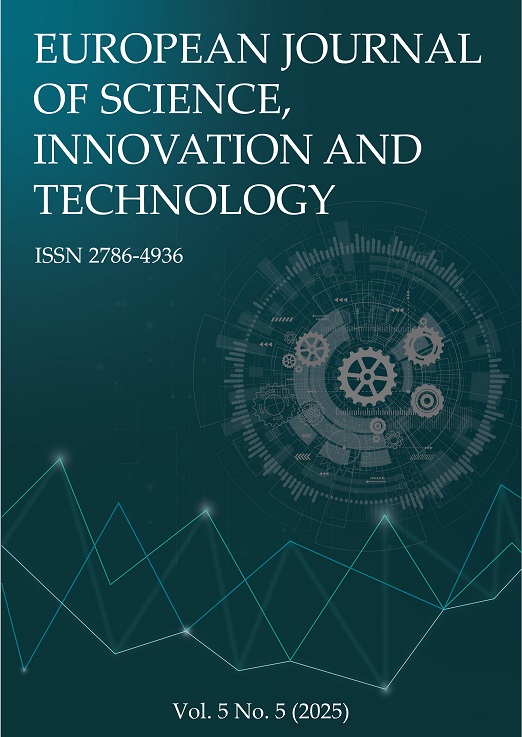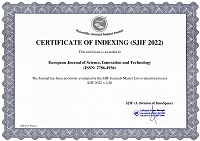An Analytical Study on the Implementation of Energy-Efficient Design Strategies in Office Buildings in Khartoum, Sudan
Abstract
This study examines the implementation of energy-efficient design strategies in high-rise office buildings in Khartoum, Sudan, where energy demand is exceptionally high. Such buildings contribute significantly to global energy consumption and carbon dioxide emissions, intensifying environmental challenges such as global warming. Understanding and applying energy-efficient design principles is therefore crucial for energy conservation in the built environment.
Fifteen recently constructed office buildings were analyzed as case studies, supported by occupant interviews. Respondents were asked to indicate their awareness of selected energy-efficient strategies identified in previous research. Descriptive statistical analysis was used to evaluate the findings. Results indicate that the adoption of energy-efficient design strategies during the design stage is limited, leading to excessive energy consumption. The strategies most widely recognized by practitioners were site planning, natural ventilation, and building orientation, while other critical strategies, such as the building envelope, were largely neglected.
The study concludes that increasing the awareness and implementation of energy-efficient design strategies requires coordinated efforts from stakeholders in Sudan’s building industry. Professional associations and regulatory bodies should promote training programs and awareness initiatives to encourage the integration of sustainable design practices and reduce the environmental footprint of office buildings.
References
Day, J. K., & Gunderson, D. E. (2015). Understanding high performance buildings: The link between occupant knowledge of passive design systems, corresponding behaviours, occupant comfort and environmental satisfaction. Building and Environment, 84, 114–124. https://doi.org/10.1016/j.buildenv.2014.10.016
Fisk, W. J. (2000). Health and productivity gains from better indoor environments and their relationship with building energy efficiency. Annual Review of Energy and the Environment, 25(1), 537–566. https://doi.org/10.1146/annurev.energy.25.1.537
Griego, D., Krarti, M., & Hernandez-Guerrero, A. (2015). Energy efficiency optimization of new and existing office buildings in Guanajuato, Mexico. Sustainable Cities and Society, 17, 132–140. https://doi.org/10.1016/j.scs.2014.10.003
Kozusznik, M. W., Maricutoiu, L. P., Peiró, J. M., Virga, D. M., Soriano, A., & Mateo-Cecilia, C. (2019). Decoupling office energy efficiency from employees’ well-being and performance: A systematic review. Frontiers in Psychology, 10, 1–19. https://doi.org/10.3389/fpsyg.2019.00150
Li, D. H., Yang, L., & Lam, J. C. (2013). Zero energy buildings and sustainable development implications – A review. Energy, 54, 1–10. https://doi.org/10.1016/j.energy.2013.01.076
Li, J., & Colombier, M. (2009). Managing carbon emissions in China through building energy efficiency. Journal of Environmental Management, 90(8), 2436–2447. https://doi.org/10.1016/j.jenvman.2009.03.010
Lu, Y., Sood, T., Chang, R., & Liao, L. (2020). Factors impacting integrated design process of net zero energy buildings: An integrated framework. International Journal of Construction Management, 1–13. https://doi.org/10.1080/15623599.2020.1748026
Malin, N. (2006, November). A group effort. Green Source, 46–51.
Nwofe, P. A. (2014). Need for energy efficient buildings in Nigeria. International Journal of Energy and Environmental Research, 2(3), 1–9.
Rana, J., Hasan, R., Sobuz, H. R., & Tam, V. W. (2020). Impact assessment of window to wall ratio on energy consumption of an office building of subtropical monsoon climatic country Bangladesh. International Journal of Construction Management, 1–26. https://doi.org/10.1080/15623599.2020.1761054
Trotta, G., Spangenberg, J., & Lorek, S. (2018). Energy efficiency in the residential sector: Identification of promising policy instruments and private initiatives among selected European countries. Energy Efficiency, 11(8), 2111–2135. https://doi.org/10.1007/s12053-018-9684-1
Copyright (c) 2025 Mofida M. Saad, Osman M. El, Qrrad Fadlallah

This work is licensed under a Creative Commons Attribution 4.0 International License.


 ISSN
ISSN 











